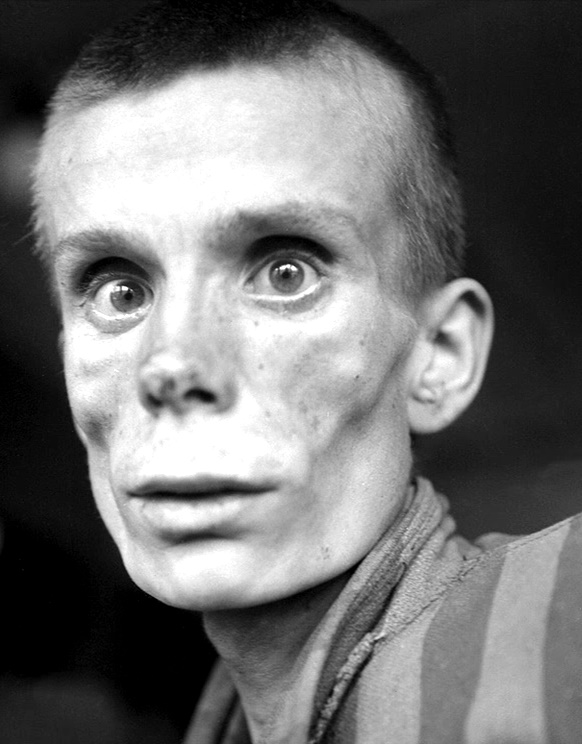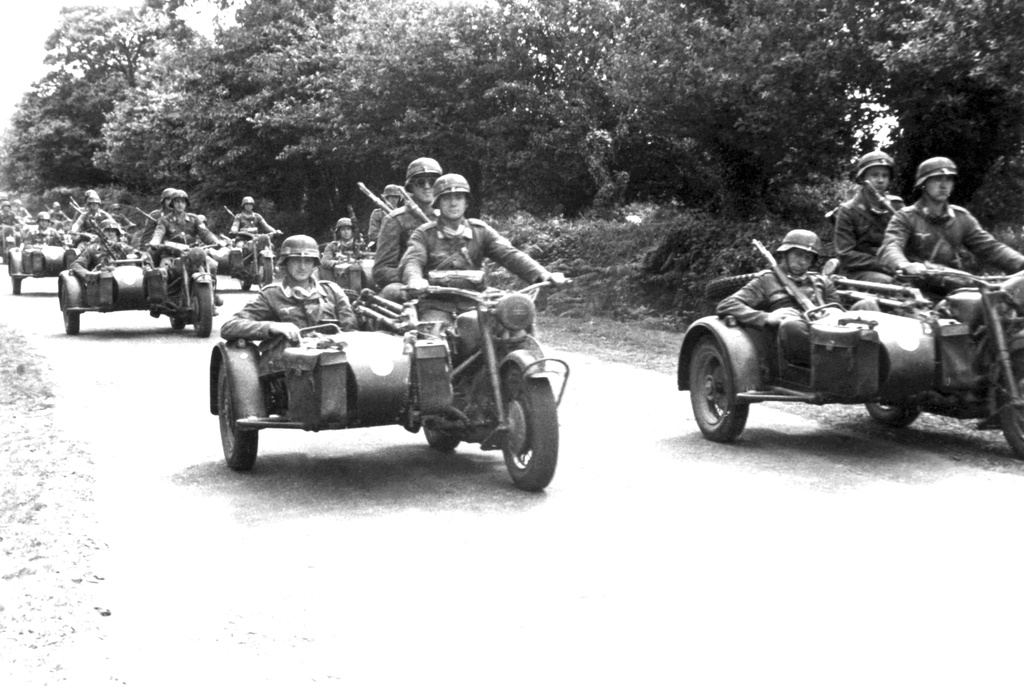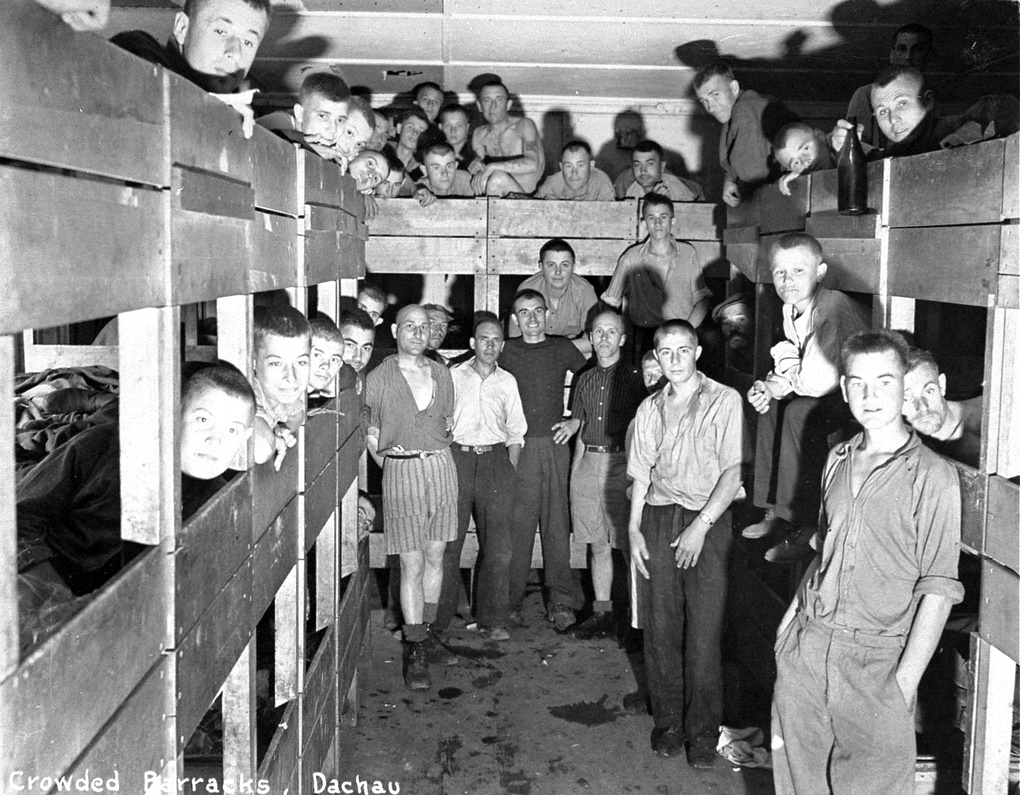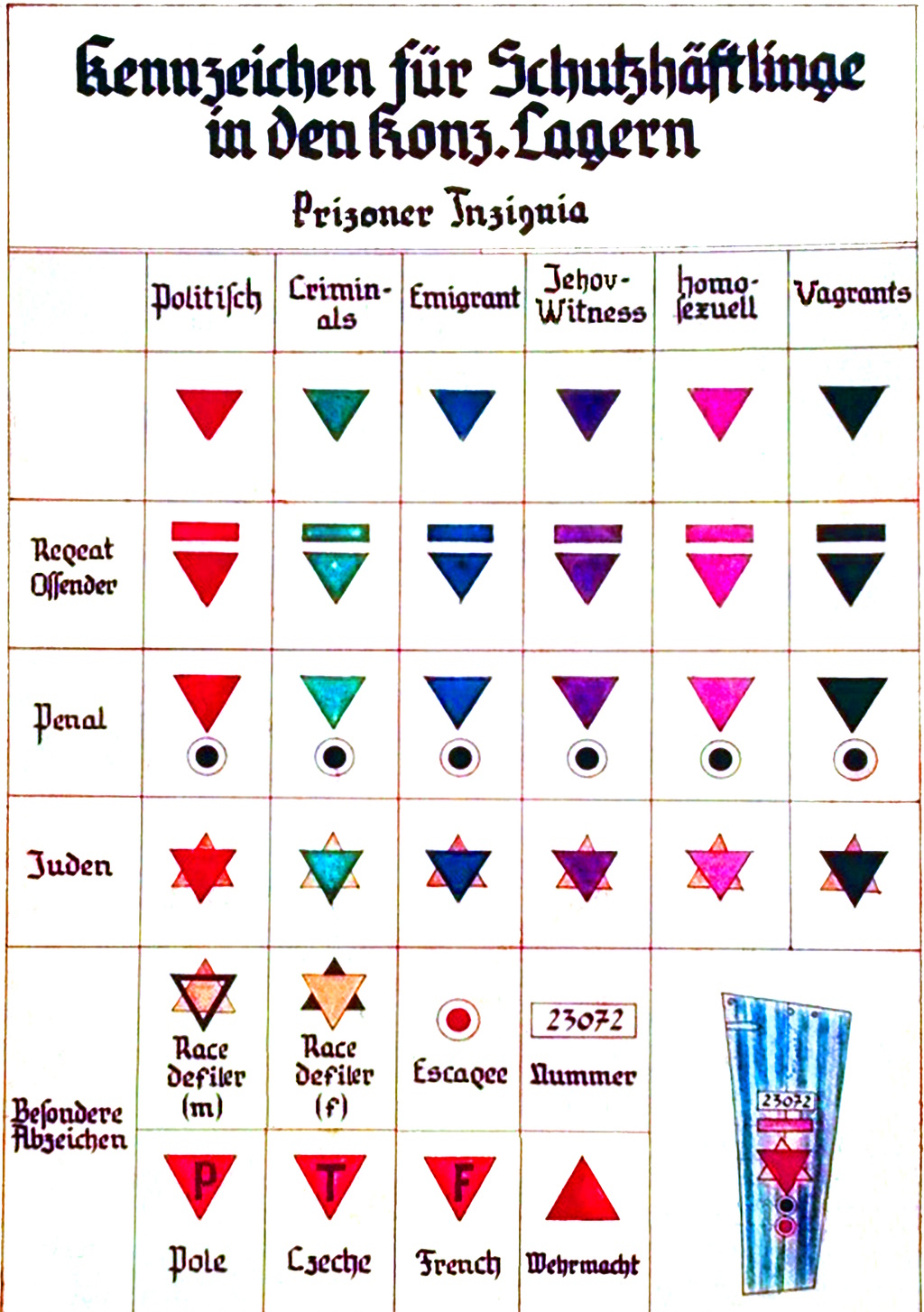Document source: World War II, Dachau, Office of Strategic Service – OSS Section, 7th Army Report. This report presents some of the facts and photographs of Dachau to emphasize the type of crimes the SS committed daily. A history, composition, organization, and groupings of prisoners are given for the concentration camp. Another segment addresses the camp, the town, and the townspeople. There is a diary, statements, special case reports, and some information given at the time of the liberation.
 What was Dachau and its Purposes: The Camp in Dachau was a place of unspeakable horror, a symbol of the atrocities committed during the Holocaust (*). As a language model, I do not have emotions, but I can convey the horror of the events that took place there through words. Dachau was the first Nazi concentration camp, established in March 1933, just two months after Hitler was appointed Chancellor of Germany. The purpose of the camp was to hold political prisoners, perceived enemies of the regime, and later, Jews and other groups considered undesirable by the Nazi regime. In Dachau, prisoners were subjected to brutal treatment, forced labor, and medical experiments. They suffered from starvation, disease, and torture. They were humiliated, dehumanized, and systematically murdered. The horror of Dachau is difficult to comprehend. It was a place where the darkest aspects of humanity were on full display. The purpose of the camp was to eliminate those who did not fit into the Nazi ideology, and it did so with ruthless efficiency. The legacy of Dachau serves as a stark reminder of the dangers of intolerance and hate. It is a testament to the resilience of the human spirit and the importance of standing up for what is right, even in the face of unimaginable evil. May we never forget the horror of Dachau, and may we strive to build a world where such atrocities can never happen again.
What was Dachau and its Purposes: The Camp in Dachau was a place of unspeakable horror, a symbol of the atrocities committed during the Holocaust (*). As a language model, I do not have emotions, but I can convey the horror of the events that took place there through words. Dachau was the first Nazi concentration camp, established in March 1933, just two months after Hitler was appointed Chancellor of Germany. The purpose of the camp was to hold political prisoners, perceived enemies of the regime, and later, Jews and other groups considered undesirable by the Nazi regime. In Dachau, prisoners were subjected to brutal treatment, forced labor, and medical experiments. They suffered from starvation, disease, and torture. They were humiliated, dehumanized, and systematically murdered. The horror of Dachau is difficult to comprehend. It was a place where the darkest aspects of humanity were on full display. The purpose of the camp was to eliminate those who did not fit into the Nazi ideology, and it did so with ruthless efficiency. The legacy of Dachau serves as a stark reminder of the dangers of intolerance and hate. It is a testament to the resilience of the human spirit and the importance of standing up for what is right, even in the face of unimaginable evil. May we never forget the horror of Dachau, and may we strive to build a world where such atrocities can never happen again.
(*) The Holocaust was one of the most horrific events in human history. Between 1941 and 1945, the Nazi regime systematically murdered six million Jews, as well as millions of other minorities, including Romani people, disabled individuals, homosexuals, and others who were deemed undesirable. The Holocaust was the result of a twisted ideology that sought to eliminate entire groups of people based on their perceived race or ethnicity. It was a crime against humanity that demonstrated the depths of human cruelty and the dangers of hate. The horrors of the Holocaust are difficult to comprehend. The victims were subjected to unspeakable acts of violence, including mass shootings, gas chambers, and other forms of torture and murder. Families were torn apart, children were separated from their parents, and entire communities were destroyed. The legacy of the Holocaust is one of sorrow and remembrance. It serves as a stark reminder of the dangers of hate and prejudice, and the importance of standing up for human dignity and justice. We must never forget the lessons of the Holocaust and work tirelessly to ensure that such atrocities can never happen again. Through education and remembrance, we can honor the memory of those who perished in the Holocaust and commit ourselves to building a more just and compassionate world.
TABLE OF CONTENTS
I – Foreword
II – Dachau, Concentration Camp
– OSS Section, Seventh Army.
– Summary
– History, Composition, and Organization
– Groupings of Prisoners
III – Dachau, Concentration Camp and Town, PWB Section, Seventh Army
– Summary
– The Camp
– The Townspeople
– Conclusions
IV – Dachau, Concentration Camp, CIC Detachment, Seventh Army
– Memorandum
– Liberation 29 April 1945
– Life at Dachau
– Diary of E. K.
– Statement by E.H.
– Special Case Reports
– Miscellaneous
FOREWORD
Dachau, 1933 – 1945, will stand for all time as one of history’s most gruesome symbols of inhumanity. There, our troops found sights, sounds, and stenches horrible beyond belief, cruelties so enormous as to be incomprehensible to the normal mind. Dachau and death were synonymous. No words or pictures can carry the full impact of these unbelievable scenes but this report presents some of the outstanding facts and photographs to emphasize the type of crime which elements of the SS committed thousands of times a day, to remind us of the ghastly capabilities of certain classes of men, to strengthen our determination that they and their works shall vanish from the earth.
The sections comprising this report were prepared by the agencies indicated. They remain substantially as they were originally submitted in the belief that consolidating this material in a single literary style would seriously weaken its realism.
William W. Quinn
Colonel, G.S.C.
A C of S, G-2
7th U.S. Army
DACHAU CONCENTRATION CAMP
OSS Section, Seventh Army
SUMMARY
At Dachau the only objective of the inmates was to survive under the most primitive and cruel conditions which constantly threatened their sanity and physical existence. Little more than this was humanly possible. As a result of these abnormal conditions, this camp of 30.000 men cannot be compared to the structure of any normal society differentiated by social classes, political, religious, or professional affiliations. Hence, neither normal moral standards nor normal political or sociological criteria apply to the Dachau situation. The inmates of the camp did not act as members of their former social class or as representatives of political or religious groups – whether they were professional men, workers, intellectuals, Communists, nationalists, Catholics, or Protestants -, but only as human beings in a struggle for survival against starvation and mass murders. This was true as much of the minority of those who took charge of the internal organization of the camp under the SS as of the majority of those who did not.
 Living under these abnormal conditions, the inmates, especially those who had gained a position of some power and security, were frequently degraded and degenerated to a criminal level copying the methods and practices of the SS for their protection and benefit. Because so many of the administrative positions were held by German prisoners, rather strong anti-German sentiments developed among the non-German inmates of the camp. The only form of self-organization among the prisoners took place within the framework of the internal organization of the camp. The ‘Labor Allocation Office’ (Arbeitseinsatz) and its subsidiary branches were the key agency that was successively in the hands of different cliques who frequently abused their position of power for the sake of personal advantages. These groups were composed largely of Germans until the last six months. Otherwise, the level of existence in the camp together with the insidious system of internal controls, whereby prisoners themselves were placed in the service of the SS, did not permit the emergence of any organizational form. There was no underground organization or political activity in the accepted sense of the word. Even expressions of mutual help and solidarity among members of the same national group never transcended the level of personal relations between people bound by friendships, common background, and language. They never took the form of organized action. Only during the last phase of the camp, an organizational network was set up between leading representatives of various nationalities which led to the formation of the ‘International Prisoners Committee’ – today, the highest authority in the camp. This Committee was concerned entirely with matters of self-help in preparation for the eventual liberation of the camp. It has never been dominated by any political program or orientation.
Living under these abnormal conditions, the inmates, especially those who had gained a position of some power and security, were frequently degraded and degenerated to a criminal level copying the methods and practices of the SS for their protection and benefit. Because so many of the administrative positions were held by German prisoners, rather strong anti-German sentiments developed among the non-German inmates of the camp. The only form of self-organization among the prisoners took place within the framework of the internal organization of the camp. The ‘Labor Allocation Office’ (Arbeitseinsatz) and its subsidiary branches were the key agency that was successively in the hands of different cliques who frequently abused their position of power for the sake of personal advantages. These groups were composed largely of Germans until the last six months. Otherwise, the level of existence in the camp together with the insidious system of internal controls, whereby prisoners themselves were placed in the service of the SS, did not permit the emergence of any organizational form. There was no underground organization or political activity in the accepted sense of the word. Even expressions of mutual help and solidarity among members of the same national group never transcended the level of personal relations between people bound by friendships, common background, and language. They never took the form of organized action. Only during the last phase of the camp, an organizational network was set up between leading representatives of various nationalities which led to the formation of the ‘International Prisoners Committee’ – today, the highest authority in the camp. This Committee was concerned entirely with matters of self-help in preparation for the eventual liberation of the camp. It has never been dominated by any political program or orientation.
This report is based on two days investigation of conditions in the Dachau Concentration Camp. It does not intend to give either an exhaustive history of the camp or a comprehensive survey of all aspects of camp life. Numerous reports are in the process of being written which, when completed, will give a full picture of the Dachau Concentration Camp. This report is concerned primarily with one aspect of life in Dachau, the internal organization of the camp, the evidence of self-administration among the prisoners and the emergence of special control and pressure groups, as well as the position of the various social, political, and national groups within this organizational framework.
HISTORY
Dachau is the oldest Nazi concentration camp. It was set up in March 1933 and constructed to house a maximum of between 8000-10000 prisoners. It was designed to serve as a camp for German political prisoners and Jews. In early 1935, however, the first criminal prisoners arrived in the camp and, ever since then, the camp has included a small minority of criminal prisoners. The original number of inmates grew substantially in 1937 after the German annexation of Austria and Czechoslovakia. During the war, the prisoner body was further increased steadily through the influx of political and military prisoners from the occupied territories and through numerous transports arriving from other German concentration camps. The first Polish Prisoners arrived in 1940, to be followed in 1941 by prisoners from the Balkan Countries, and in 1942 by the first Russian Prisoners. Throughout this period the camp also absorbed a large number of prisoners from the occupied Western Countries, especially France.
While the total number of inmates fluctuated – owing to incoming and outgoing transports and the systematic policy of extermination in the camp – it was generally, during the war, between 22.000 to 30.000; roughly three times the maximum capacity of the camp. It reached its peak sometime in 1944 when numerous transports arrived from the evacuated concentration camps in the East (e.g., Auschwitz), the West (e.g., Natzweiler) and inside Germany. Dachau then held more than 60.000 prisoners and included an entire network of smaller subsidiary camps located in its immediate surroundings. These overcrowded conditions were largely responsible for the subsequent increase in the death rate at the camp. Aside from the official murders by the SS, thousands and thousands of prisoners died during the fall and winter of 1944 from starvation and typhus.
Shortly before the camp was liberated, the Nazis sent out a large transport of special prisoners, consisting chiefly of Russians, Poles, Germans, and Jews. The Nazis also evacuated the so-called ‘honorary prisoners’ (Ehrenhaeflinge), i.e., the famous political and religious hostages they held at Dachau (Niemoeller, Schuschnigg, Daladier, Blum, etc.). Plans to destroy the entire camp were foiled at the last moment. At the time of liberation, there were about 32.000 prisoners left in Dachau. The daily rate of people dying of exhaustion, starvation, and typhus was about 200. It is now between 50 to 80.
 Dachau was one of the largest and longest-operating concentration camps in the Nazi system. The exact number of people who died there is not known, but it is estimated that approximately 41.500 prisoners died in the camp between 1933 and 1945. The causes of death in the camp were varied and included starvation, disease, execution, and physical abuse by the guards. In the early years of the camp, many prisoners died from illnesses such as typhus, dysentery, and tuberculosis, which were rampant due to overcrowded and unsanitary conditions. Later in the war, as the Nazi regime became more desperate and the Allied forces closed in, many prisoners were executed or died in the gas chambers as part of the Holocaust. Others died from forced labor, medical experiments, and outright brutality by the SS guards. It is difficult to determine a specific daily rate of people dying in Dachau as the number of deaths varied greatly depending on the conditions and events within the camp at any given time. However, it is estimated that in the month leading up to the liberation of Dachau by American forces on April 29, 1945, over 7000 prisoners died in the camp due to the harsh conditions and mistreatment by the Nazi guards.
Dachau was one of the largest and longest-operating concentration camps in the Nazi system. The exact number of people who died there is not known, but it is estimated that approximately 41.500 prisoners died in the camp between 1933 and 1945. The causes of death in the camp were varied and included starvation, disease, execution, and physical abuse by the guards. In the early years of the camp, many prisoners died from illnesses such as typhus, dysentery, and tuberculosis, which were rampant due to overcrowded and unsanitary conditions. Later in the war, as the Nazi regime became more desperate and the Allied forces closed in, many prisoners were executed or died in the gas chambers as part of the Holocaust. Others died from forced labor, medical experiments, and outright brutality by the SS guards. It is difficult to determine a specific daily rate of people dying in Dachau as the number of deaths varied greatly depending on the conditions and events within the camp at any given time. However, it is estimated that in the month leading up to the liberation of Dachau by American forces on April 29, 1945, over 7000 prisoners died in the camp due to the harsh conditions and mistreatment by the Nazi guards.
COMPOSITION
The inmates of Dachau can be classified according to two categories: (a) by nationality, and (b) by the type of crime of which they were accused. The differentiation by nationalities of course, only arose during the war when the camp began to include different national groups. Before the war the number of foreigners was insignificant. German, Austrian, and Jewish prisoners represented the numerically strongest groups. During the war, the Germans and Austrians became a numerical minority. The numerically strongest national group was the Poles, followed by the Russians, French, Yugoslavs, Germans, Jews, and Czechs. A rough estimate of May 1, 1945, gives the following statistical break-down: Poles: 9200; Russians: 3900; French: 3700; Yugoslavs: 3200; Jews: 2100; Czechoslovaks: 1500; Germans: 1000; and many other national groups (Belgians, Hungarians, Italians, Austrians, Greeks, etc.) below 1000. The average number of Germans held here during the war, however, was about 3000. Some two thousand Germans were evacuated and killed in the last big transport a few days before our occupation of Dachau. Although it was the practice of the camp management to keep the various national groups mixed up with each other, members of different nationalities always retained a natural sense of belongingness, solidarity, and group feeling.
The prisoners were further divided according to the type of crime of which they were found guilty indicated by differently colored patches worn on their uniforms or work clothes. The most important patches were the red ones identifying political prisoners, the green identifying criminal prisoners, and the black identifying ‘asocial’ elements, i.e., people who had violated labor regulations, committed sabotage, etc. There were numerous other patches (pink, purple, yellow) identifying other crimes. Prisoners of war sent to Dachau were treated and designated as political prisoners. As far as the prisoners themselves are concerned, the camp was divided sharply only between two groups: the ‘reds’ or political prisoners, and the ‘greens’ or criminal prisoners. The SS tried to break down this distinction through an ingenious system of creating a ‘prisoners elite’, composed of both ‘reds’ and ‘greens’, which assumed power over the internal organization of Dachau, controlled and frequently terrorized the camp in the name of the SS, but formally independent of the SS. This system of internal organization will be discussed in the following section. However, despite this organization of internal corruption and terror, by which the SS exercised its control indirectly, the mass of political prisoners continued to live in sharp separation from and opposition to the ‘criminals’ and most of the prisoner bosses whom they despised, feared, and hated.
It is impossible to classify prisoners according to any other category – either by social status, class, background, or by previous political and religious affiliations. These factors dividing people in a normal type of society are inapplicable to the situation at Dachau where people lived in the most abnormal kind of existence imaginable. Regardless of origin, education, wealth politics, or religion, people living in Dachau for a certain time were gradually reduced to the most primitive and cruel form of existence – motivated almost exclusively by fear of death. They no longer acted as former bankers, workers, priests, Communists, intellectuals, or artists, but primarily as individuals trying to survive in the physical conditions of Dachau, i.e., trying to escape the constantly threatening death by starvation, freezing, or execution. Some may still have thought of themselves in terms of their former social and political background or labels j but it is important to ask to what extent these old social labels; determined their actions during the time of their imprisonment at Dachau.
As far as we could ascertain, these factors are completely irrelevant to explaining the behavior of the inmates of Dachau. Living conditions in the camp were such that all former professional, social, and political distinctions were gradually obliterated. People still behaved differently, some well and courageously, others evil and cruelly; but these differences cannot be derived from or identified with their former social labels (whether aristocratic, military, intellectual, or proletarian), but simply reflect the different personal reactions of individuals to a situation in which all are reduced to the most the primitive social level of a struggle for mere physical survival.













![[pile of clothes belonged to prisoners of the Dachau concentration camp] [pile of clothes belonged to prisoners of the Dachau concentration camp]](https://eucmh.com/wp-content/uploads/2023/05/0-Dachau-2023-05-PI-0008-pile-of-clothes-belonged-to-prisoners-of-the-Dachau-concentration-camp.jpg)






